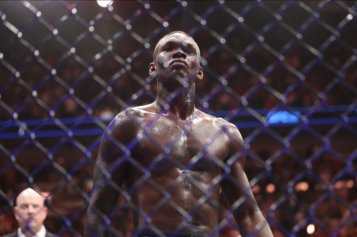There was once a family that hailed from beautiful Rio de Janeiro, Brazil. The family was surprisingly stocked with boys who all seemed to walk to the pied piper movement of their father, a martial artist. However, his form of combative exercise was not atypical to his surroundings, which spawned the beautiful fighting dance of capoeira. His was influenced from Japan and was called Jiu-Jitsu.
When translated, Jiu-Jitsu means 'the gentle art' and it's succession of holds, joint manipulation and elaborate chokes were too appealing to resist for the eldest of the growing clan. This family bore the name Gracie and their passion spawned a unique brand of gentle art that literally now has their national solidarity emblazoned proudly on the front; Brazilian Jiu-Jitsu. After beating each other gracefully for years the crew decided to compete in regional tough man competitions, known as Vale Tudo (anything goes) to exhibit the new art form as a way of dismantling larger, fiercer foes. They succeeded time after time beating men many times larger than themselves and decided that it was time to export this new tool to the land of seemingly unlimited promise, the United States.
The brothers split up and spread across the nation opening studios that taught their version of the gentle art capitalizing on the martial arts boom engrossing the minds of Americans during the 60's and 70's. The fervor of the martial arts scene was deafening and soon as man always does, competition was ripe on the horizon. However, now there was a clamor to determine which was the best combat style and the need for a venue to showcase fighting forms in comparison to each other was necessary. As usual the brothers from Rio would prove to be pioneers yet again.
The Ultimate Fighting Championship (UFC) was born amid Senator John McCain's national campaign that would call the spectacle "human cockfighting," a series of shows commenced pitting every martial arts style against each another in bizarre fashion. From boxer vs. sumo wrestler to karate practitioner vs. the All-American wrestler, the event took on an international Vale Tudo feel minus the prototype backyard and alley venues of Brazil. No these were held in convention centers and large arenas then blasted to homes, via satellite, across the globe as a pay-per-view property. From the myriad of professionals of each discipline alone stood the youngest of the Gracie brothers, Royce (pronounced Hoy-ce), who with mastery utilized Brazilian Jiu-Jitsu to beat all styles and become the first champion of this style of competition. The win solidified two things: the Gracie credited Brazilian Jiu-Jitsu earned its respect across the world and future competitors began to realize that they need to learn more than one martial arts discipline.
Evolution
Fast forward to a man by the name of Jeff Blatnick who coined the term mixed martial arts (MMA) and with it a new way of thinking. No longer is it sufficient to be a one trick pony. Today you must have A.D.D when it comes to combat sports. Yeoman martial arts practitioners now go from judo to BJJ while practicing western boxing and Thai boxing all in a day's time. Gone are the days of the martial artist too. Today these go-hards are known simply as fighters, those willing to learn all and give all in a cage or a ring. It is the ultimate (pun intended) form of competition simply layered with a step-your-game-up feel based on all the physicality you are supposed to possess.
Yet the hip hop generation was late to the party. I remember arenas that were literally a sea of vanilla faces with so little sprinkles of cacao you would feel cheated if it were an organic smoothie. The MMA promoters were mainly to blame since they knew their fan base came mainly from the dojos, studios and gyms which were a little devoid of color. Jim Kelly and Kareem Abdul-Jabbar aside, the burgeoning hip hop generation preferred its martial arts contained to the silver screen and not live in the arena stands. There was no reason to believe that we would ever begin to pay attention to what started to become an organized State sanctioned real competition with rules and regs.
However, when you look at the ranks of collegiate wrestling programs those who couldn't make it in football or other popular sports that have grown up urban and edgy are littered throughout. Formerly after a stellar career in college a position as a coach, gym teacher or nothing at all awaited. Those clever enough to don a persona and traverse the male drama circuit of pro wrestling found a living and some even television glory but those success stories are few and if you've seen Mickey Rourke's mug in the Wrestler you know the potential peril. MMA created a way for these guys to become "Suga" Rashad Evans and Quinton "Rampage" Jackson.
Let's get even more gutter and the humid backyards of Miami, Hialeah and the Pork & Beans where gambling and ethereal survival exist in the form of street brawls. These guys who are hopeless enough to fight it out with literally no rules formerly had concussions mixed with street fame only in their immediate future. Now one can go in the gym, train and compete on the grand stage and, if you are lucky, become an icon of the streets to the cage like Kevin "Kimbo Slice" Ferguson or Jorge Masvidal.
The UFC now has broadened the appeal of MMA to the entire world with consistent events and top-notch production quality on major networks and pay-per-view providers. This has spawned competitive promotions and options for a new generation of real and wanna be fighters who can look past the traditional football, basketball and baseball to another option for the unsatisfied athlete.
However, is MMA willing to accept its burgeoning new audience and talent pool? We will explore this in part 2, which you can read here.



